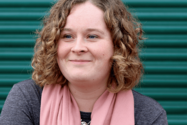
Staying on Target
What characteristics make a cancer therapy more likely to effectively treat disease?
Targeted therapies have had a huge impact on cancer treatment, in some cases significantly improving patient survival – but not in all cases. To treat the cancer, the drug must, of course, reach the tumor tissue and be taken up by cells, but this doesn’t always happen effectively despite targeting efforts. Why not?
Tumors and their surrounding environments are complex and heterogeneous – resulting in different responses to the same drug. Katarzyna A. Rejniak and Aleksandra Karolak of the Rejniak Lab at the Integrated Mathematical Oncology Department at the H. Lee Moffitt Cancer Center & Research Institute in Tampa, Florida, are part of a team that has combined mathematical modeling and single-cell imaging of cancer cells to better understand what drug properties make for more efficient drug uptake (1). Here, we find out more.
What inspired you to investigate this problem?
Katarzyna A. Rejniak (KAR): Our extended team combines mathematicians, chemists, biologists and image analysis experts. Working in the Cancer Research Institute allowed us to participate in seminars in which pathologists and cancer biologists discussed the use of medical images in cancer diagnosis and treatment monitoring. We decided to use tumor tissue histology images or fluorescent images as a domain for mathematical models and to test whether drugs or imaging agents will penetrate tumor tissue differently depending on cellular and stromal architecture.
How does your approach work?
KAR: The Analytic Microscopy Core at our Cancer Center provide us with digital images of tumor histology. We then develop computational routines to discretize these images, select tumor cells, determine their sizes and shapes, and use them in our computational models. Our models also contain drug molecules with pharmacokinetic and pharmacodynamic properties of experimental drugs or biomarkers. We run multiple simulations in which we change some drug properties or drug administration schedules to see if we can achieve more efficient drug distribution within the tumor tissue and individual cells.
What drug characteristics did you find to be most important for uptake?
Aleksandra Karolak: The answer is complex… The successful recognition of drug molecules by receptors and high affinity binding plays a pivotal role in the formation of drug-receptor complexes. However, we didn’t quite expect to see that the fast release scheme of a drug could lead to increased uptake for moderate affinity drugs. On the other hand, because of multifaceted barriers, efficient drug uptake by cells with limited access to drug molecules won’t be improved until receptor-ligand contact takes place. Here, the impact of affinity and release scheme becomes less important, at least until drug molecules reach the distant cells. For this to happen, some biophysical and biochemical drug properties including size, molecular weight, charge, hydrophobicity, or conformation must be adjusted. In our model, we vary these drug properties to explain on the single cell level why certain drugs could be more successful in reaching distant cells than others.
What’s next?
KAR: We hope that micro-pharmacology techniques developed by us and others will allow drug efficacy to be tested within the tumor tissue before the drugs are tested in animals. We are starting to examine how to stratify tumors to match them with the most effective treatment based on our simulation studies. The current plan is for animal studies first, but we hope that this approach will have translational potential. One of the outcomes of our published work was that by changing the way the same drug was administered (slow or fast release) it was possible to either saturate cells located near the vasculature or far from the vasculature. Thus, we proposed a way to predict how to administer a drug to increase its effectiveness.
- A Karolak et al., “Targeting ligand specificity linked to tumor tissue topological heterogeneity via single-cell micro-pharmacological modeling”, Sci Rep, 8, 3638 (2018). PMID: 29483578.

I have an extensive academic background in the life sciences, having studied forensic biology and human medical genetics in my time at Strathclyde and Glasgow Universities. My research, data presentation and bioinformatics skills plus my ‘wet lab’ experience have been a superb grounding for my role as a deputy editor at Texere Publishing. The job allows me to utilize my hard-learned academic skills and experience in my current position within an exciting and contemporary publishing company.















